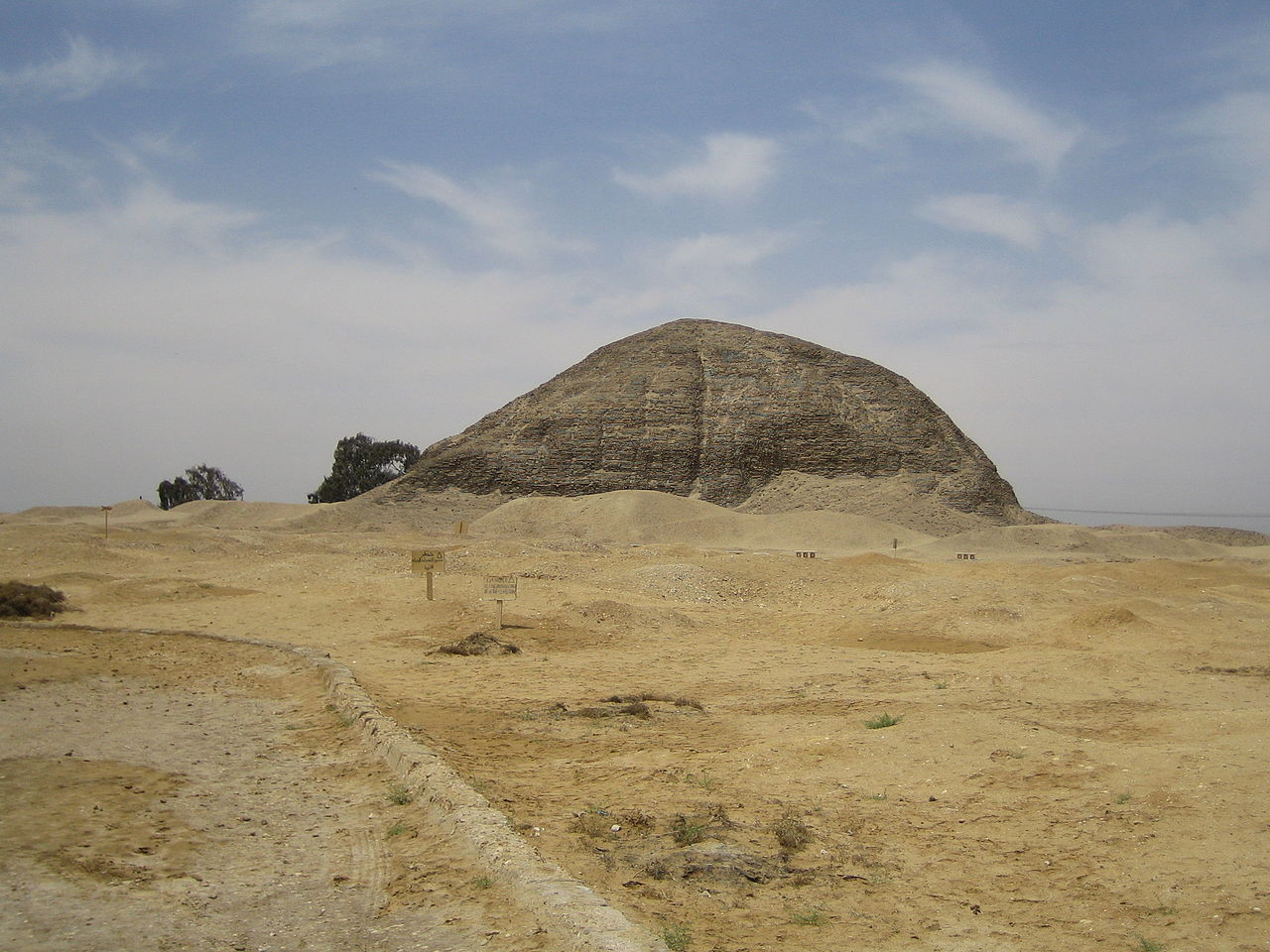Hawara pyramid is one of the pyramids of Egypt. It was built by the Egyptian Pharaoh, Amenemhat III, from the kings of the 12th family in the village of Hawara, 9 km southeast of the city of Faiyum. It is of mud brick covered with limestone. The original height of the pyramid was 58 meters and the length of each side was 105 meters, and now only 20 meters remain of its height. The pyramid contains corridors and many rooms, ending with the burial chamber. It contained a huge stone sarcophagus made of one piece of quartzite, weighing 110 tons. The door to the room was closed by a huge stone, which was closed by leaking sand beneath it into two small side rooms. The thieves could not enter the coffin room through this door, but they managed to reach it through a hole in the ceiling. They looted it and burned all the funeral furniture.
In the pyramid area there are the cemeteries of the children of Sidra, and within it is the Izbat Raafat Sidra. There are a group of monuments, such as the tomb of Princess “Nefropetah”, and the cemetery is located 1.5 km before the pyramid of Hawara, about 1.5 km from the Bahr Youssef canal. It is a cemetery built of limestone in which there is a granite sarcophagus that was transferred to the Antiquities Authority. He found in this tomb a table with offerings and three silver vessels. And a necklace for Princess Nefro Ptah, daughter of King Emenemhat the Third.
Next to the Hawara pyramid, there are the remains of the palace of Labyrinth (Lapernet), which was a large temple built by Emmanemhat the Third and adjacent to the pyramid, and it contained 12 roofed halls. Six of them are facing north and six are facing south. It has gates facing one another. The building is surrounded by a wall. The number of the building’s rooms is estimated at 300 rooms, half of which are at the bottom of the ground, containing the king’s tomb and the sacred crocodile mummies, and the other half above the ground. Only some traces of the upper floor columns remain, and the lower floor has not been discovered so far. There are cemeteries from the Late Period. The description of the wandering palace came in a manuscript by Herodotus, the Greek historian, on the history of ancient Egypt
King Amenemhat the Third began building his second pyramid in the 15th year of his reign and gave it the name “Amenemhat Ankh,” which means Amenemhat lived. The reason for its construction of the second pyramid was that its first pyramid in Dahshur did not meet its requirements. The second pyramid was built as was the structure of its first pyramid of raw bricks, except for the angle of the slope of the pyramid, which increased to 5 and 48 degrees. The outer covering of the pyramid was built as usual from limestone. But the pyramid lost that coverage in ancient times, then climatic erosion occurred on the main body of the pyramid. It is considered the last pyramid to be built during the era of the Pharaohs of this large size.






